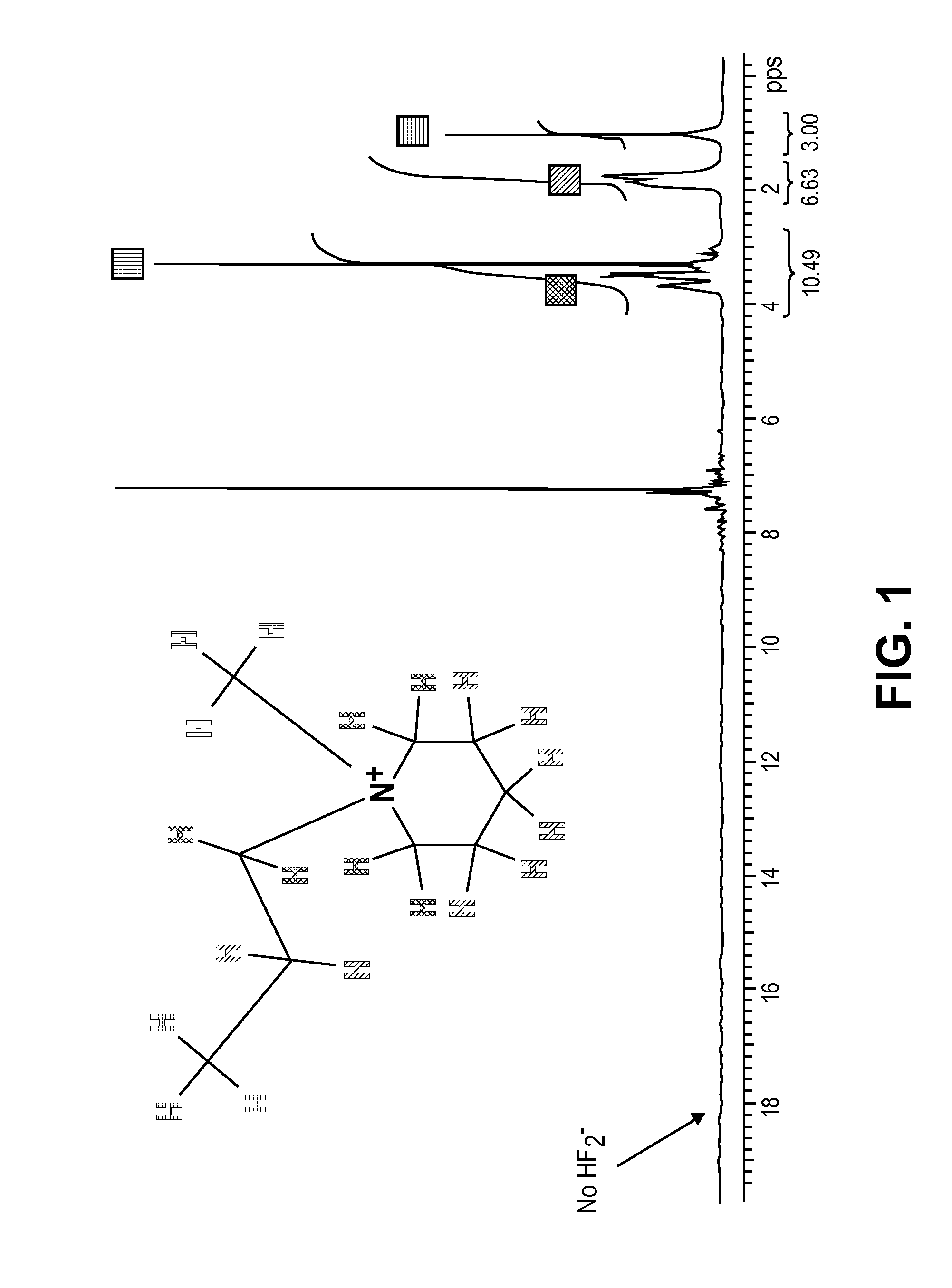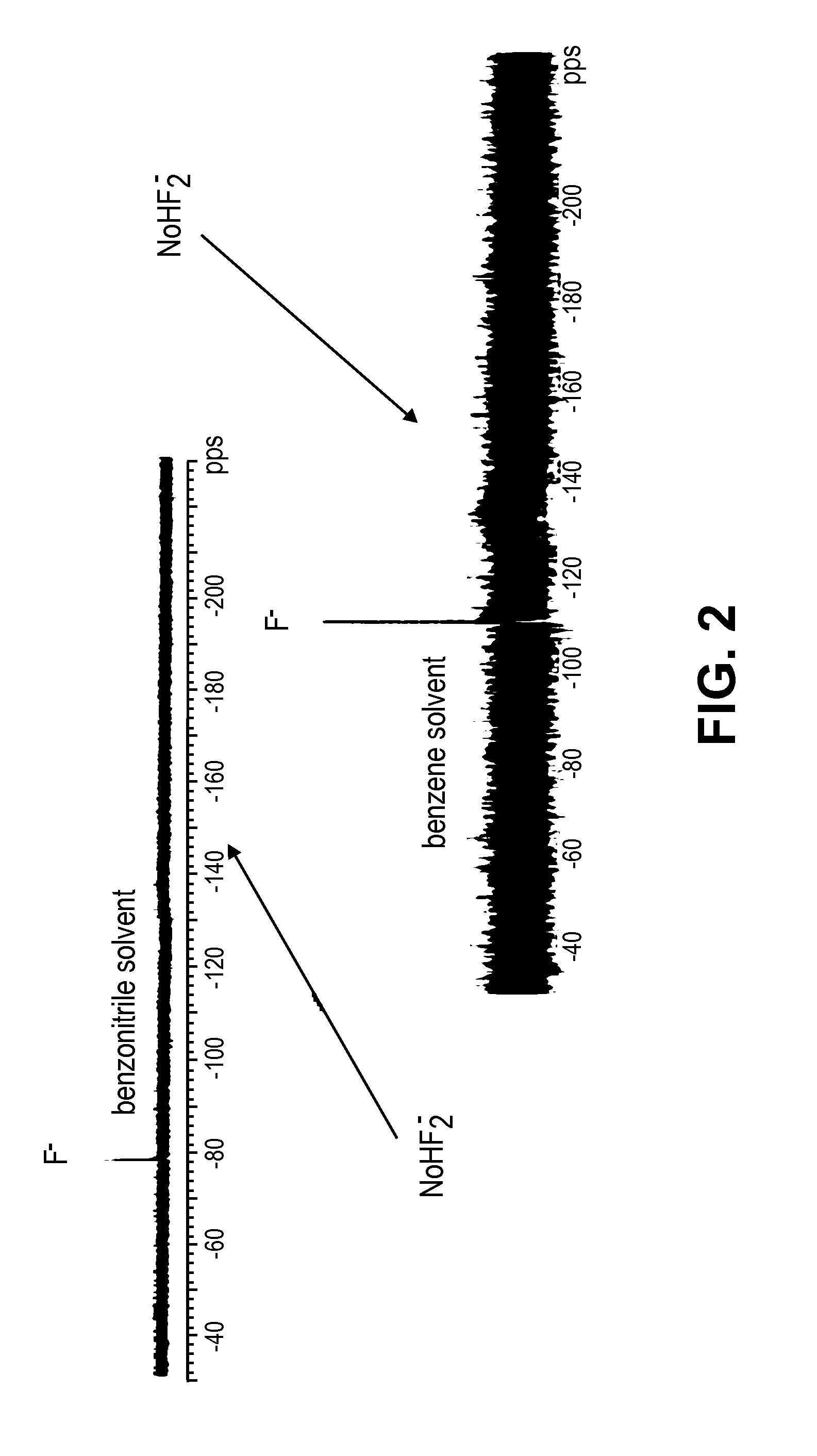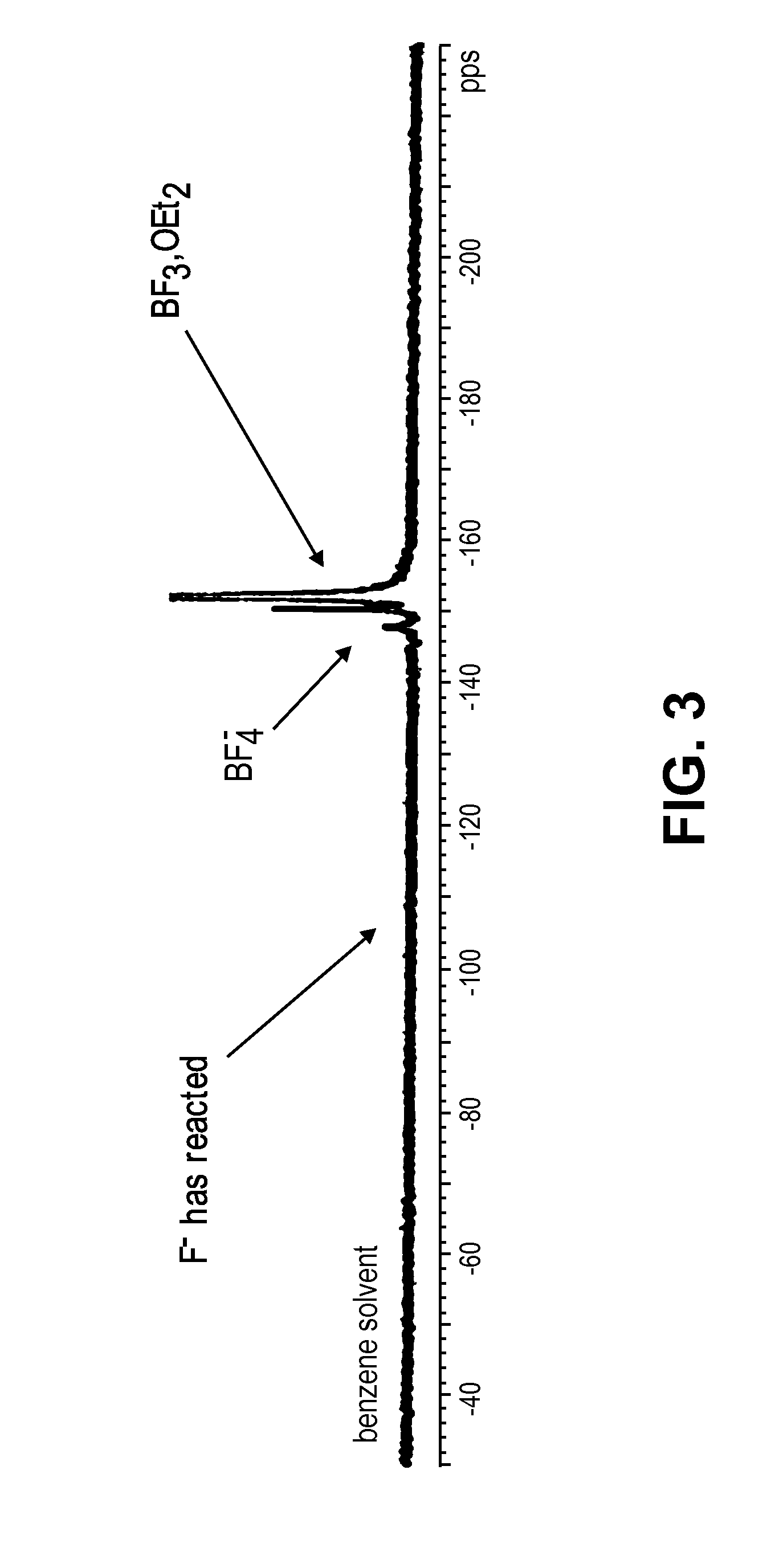Fluoride Ion Battery Electrolyte Compositions
- Summary
- Abstract
- Description
- Claims
- Application Information
AI Technical Summary
Benefits of technology
Problems solved by technology
Method used
Image
Examples
example 1
[0062]Preparation of 1-methyl,1-propyl-piperidinium fluoride. 1-methyl,1-propylpiperidinium bromide was synthesized by adding 1-bromopropane (28.8 g, 0.21 mol) drop-wise into N-methylpiperidine (21.1 g, 0.21 mol) dissolved in acetonitrile (150 mL) The precipitated 1-methyl,1-propylpiperidinium bromide was filtered, washed with acetonitrile (5×10 mL) and dried in vacuum. 1-methyl,1-propylpiperidinium bromide (1 g, 5 mmol) was dissolved in H2O (20 mL) To this solution was added a solution of AgF (0.51 g, 4 mmol) in H2O (20 mL) over 30 minutes, resulting in the precipitation of AgBr as a yellow solid. The mixture was filtered and the filtrate was dried on a rotary evaporator (keeping the temperature below 50° C.) to afford a white solid, hereafter designated MPPF.
[0063]Yield 0.7 g, 4 mmol, 95%.
example 2
[0064]NMR spectroscopy. 0.05 g MPPF was dissolved in 1 mL dry C6D6 in an Ar-filled glovebox, and investigated by 1H and 19F NMR spectroscopy. FIG. 1 shows the 1H NMR spectrum, indicating the presence of MPP+ cation in stable form. FIG. 2 shows the 19F spectrum, indicating the presence of F− ion in solution, at similar chemical shift to that observed for other “naked” fluoride ions in C6D6 solution described in Schwesinger et al., Chem. Eur. J., 2006, 12, 438. No impurity peaks due to HF or HF2− were observed in this spectrum.
example 3
[0065]Reactivity of MPPF in solution. To the solution of MMPF in C6D6 described in Example 2 was added ˜0.1 mL BF3.OEt2 in dry Et2O. 19F NMR spectroscopy shown in FIG. 3 indicated the quantitative consumption of F− to give BF4−, thus demonstrating the reactivity of the F− ion in organic solution.
PUM
 Login to View More
Login to View More Abstract
Description
Claims
Application Information
 Login to View More
Login to View More - R&D
- Intellectual Property
- Life Sciences
- Materials
- Tech Scout
- Unparalleled Data Quality
- Higher Quality Content
- 60% Fewer Hallucinations
Browse by: Latest US Patents, China's latest patents, Technical Efficacy Thesaurus, Application Domain, Technology Topic, Popular Technical Reports.
© 2025 PatSnap. All rights reserved.Legal|Privacy policy|Modern Slavery Act Transparency Statement|Sitemap|About US| Contact US: help@patsnap.com



